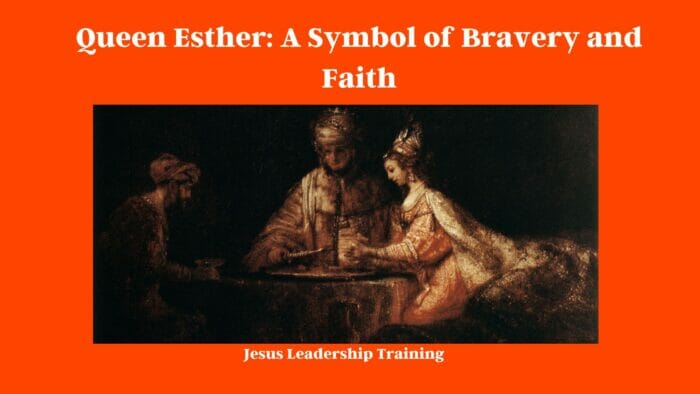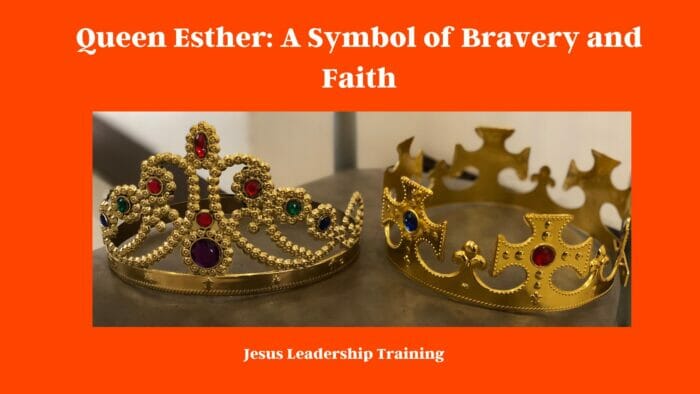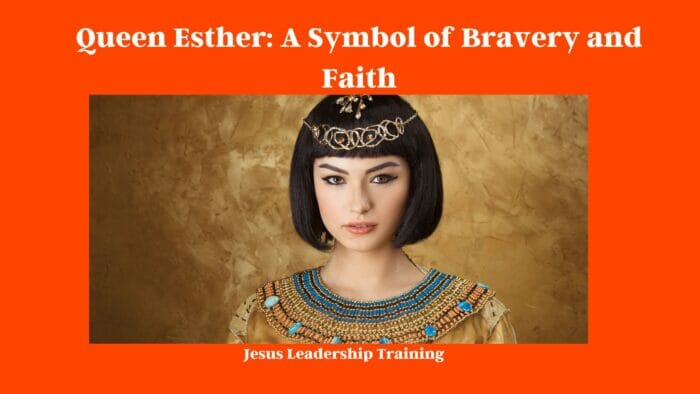Queen Esther, a major figure in the Old Testament, has been a symbol of courage, faith, and wisdom for centuries. Her story is not merely one of ancient history, but rather a narrative filled with lessons that resonate profoundly even today. This article seeks to delve deep into the intriguing journey of Queen Esther, examining her story from various perspectives and shedding light on her continuing influence in contemporary society.
Table of Contents
The Birth and Early Life of Queen Esther
The Origin of a Queen
Queen Esther, initially known as Hadassah, was born in the Persian Empire during the reign of King Ahasuerus, commonly identified as Xerxes I. As an orphaned Jewish girl, she was raised by her cousin Mordecai. However, her life took an unexpected turn when she became the queen of the vast Persian Empire.
Etymology of the Biblical Name Hadassah
The name Hadassah comes from a Hebrew name meaning “myrtle tree”. It is a biblical name found in the Old Testament that is derived from the Hebrew word hadas. The etymology of the name is believed to be rooted in the ancient Semitic languages of Hebrew, Greek, and Aramaic.

Origin
The original Hebrew name Hadassah was first mentioned in the Old Testament book of Esther. The name is derived from the Hebrew word hadas, which is translated to mean “myrtle tree”. The myrtle tree was a symbol of purity and beauty in ancient Israel. In the Bible, Hadassah was the Hebrew name given to Queen Esther, who was an influential Jewish queen in the Persian Empire. The name Hadassah may also be related to the ancient Mesopotamian goddess Ishtar, whose name is derived from the same root word as Hadassah.
Hebrew
In the Hebrew language, Hadassah is written as “הדסה”, and is pronounced “ha-dah-sah”. The word is composed of two elements: the Hebrew root “hadas” and the feminine suffix “ah”. The root “hadas” is related to the myrtle tree, a symbol of purity and beauty in ancient Israel. The suffix “ah” is used to indicate a female name.
Greek
In Greek, Hadassah is written as “Άδασσα”, and is pronounced “ah-dah-sah”. The name is composed of two elements: the Greek root “adassa” and the feminine suffix “a”. The root “adassa” is related to the myrtle tree, a symbol of purity and beauty in ancient Greece. The suffix “a” is used to indicate a female name.
Aramaic
In Aramaic, Hadassah is written as “הדסה”, and is pronounced “ha-dah-sah”. The name is composed of two elements: the Aramaic root “hadas” and the feminine suffix “ah”. The root “hadas” is related to the myrtle tree, a symbol of purity and beauty in ancient Aramaic. The suffix “ah” is used to indicate a female name.
In summary, the name Hadassah is derived from the Hebrew, Greek, and Aramaic words for “myrtle tree” and is a biblical name found in the Old Testament. The name has long been associated with purity, beauty, and strength, making it a popular choice for many parents when naming their children.

The Royal Selection: Esther’s Ascent to the Throne
When Queen Vashti fell out of favor with King Ahasuerus, the king ordered the selection of a new queen. Esther, noted for her exceptional beauty and grace, was chosen among all the women in the empire. Yet, she kept her Jewish identity a secret, as advised by Mordecai.
Queen Esther: A Figure of Faith and Courage
Spiritual Lessons we Can Glean from Queen Esther’s Life
here’s a table illustrating some key spiritual lessons we can learn from the life of Queen Esther in the Old Testament:
| Lesson | Description |
|---|---|
| Courage | Despite the risk to her own life, Esther stood up for her people. Her courage reminds us to stand firm in our convictions, even when it is difficult. |
| Divine Appointment | Esther’s elevation from a common Jewish girl to the queen of Persia was no accident. It reminds us that God has a plan for each of us and can position us for His purposes, no matter our background. |
| Fasting and Prayer | Esther called for a fast before making her petition to the king. This highlights the power of prayer and fasting when faced with critical decisions or situations. |
| Advocacy | Esther used her position to advocate for her people, demonstrating the importance of using whatever influence we have to promote justice and protect the vulnerable. |
| Faith Over Fear | Esther chose to trust God and confront her fears, ultimately saving her people. Her story teaches us to let faith guide our actions rather than fear. |
| Obedience to God | Even though it was risky, Esther obeyed Mordecai’s advice and God’s law, teaching us the importance of obedience to God’s guidance. |
These lessons from Queen Esther’s life provide invaluable insights for living a life of faith, courage, and obedience to God’s will.

Unmasking Her Identity: A Dangerous Revelation
The defining moment in Esther’s life came when her people, the Jews, faced imminent destruction, planned by the king’s highest official, Haman. Esther faced the daunting task of revealing her identity to the king, a potentially lethal move, to save her people.
The Turning Point: Esther’s Bold Petition (Esther Saves)
Esther, showcasing tremendous courage, risked her life by appearing uninvited before the king. Displaying wisdom and tact, she invited the king and Haman to a series of banquets before revealing Haman’s plot and her Jewish identity.
The Impact of Queen Esther’s Actions
The Triumph: A Victory for the Jews
Esther’s bravery resulted in Haman’s downfall and a decree that enabled the Jews to protect themselves, leading to their victory over their enemies. This event is celebrated annually in the Jewish holiday of Purim.
Esther’s Legacy: A Tale of Courage and Faith (Bible)
Queen Esther’s story has echoed through the centuries, inspiring countless individuals with her faith, courage, and wisdom. Her tale continues to influence literature, art, and religious thought.
Queen Esther is one of the most iconic figures in Jewish history, her courage and faith inspiring people for thousands of years. Her story is a powerful reminder of the importance of standing up for what is right, no matter the cost. Historians have long looked to Esther as a symbol of bravery and faith, her story inspiring generations of people.
Queen Esther’s Early Life
Queen Esther was born in Persia in the fifth century BCE. Her parents had been taken into exile when the Babylonian Empire sacked Jerusalem in 587 BCE. Esther was raised in the royal court of her uncle Mordecai, who was a courtier in the Persian court. Esther was well-educated, and her beauty and intelligence quickly earned her the admiration of the court.
Queen Esther’s Marriage to the King
When the King of Persia decided to find a new queen, he commanded that every eligible woman in the kingdom be brought before him. Esther was chosen, and she bravely faced the king and became his queen. She used her influence to gain favor with the king, and she quickly became his favorite.
Queen Esther’s Courageous Act
Esther’s life changed when Haman, the king’s advisor, plotted to kill the Jews. Esther bravely risked her life to save her people, confronting the king and revealing her identity as a Jew. The king was enraged, but Esther’s bravery inspired him to spare her people. The king issued a decree granting the Jews the right to defend themselves against their enemies.
Major Events that Haman Did In Relation to the Jews
here’s a table outlining the major events involving Haman and his interactions with the Jews, particularly Mordecai and Esther, according to the Book of Esther in the Old Testament:
| Event | Description |
|---|---|
| Haman’s Promotion | Haman was promoted by King Ahasuerus (also known as Xerxes) to a high position in his kingdom. He commanded all royal officials to kneel and pay honor to Haman. |
| Mordecai’s Refusal | Mordecai, a Jew and the cousin of Queen Esther, refused to kneel and pay honor to Haman, which infuriated Haman. |
| Haman’s Vengeful Plan | Due to Mordecai’s refusal, Haman planned to destroy all the Jews in the empire. He convinced King Ahasuerus to issue a decree ordering the annihilation of all Jews. |
| Casting of Lots (Pur) | Haman cast lots (pur) to decide the day of the massacre of the Jews. The date chosen was the thirteenth day of the twelfth month, Adar. |
| Esther’s Intervention | Queen Esther, herself a Jew, was informed by Mordecai of Haman’s plan. She bravely planned to intervene by inviting the King and Haman to a banquet. |
| Haman’s Downfall | At the second banquet, Esther revealed her Jewish identity and exposed Haman’s plot. The king was outraged and ordered Haman to be hanged on the gallows that he had prepared for Mordecai. |
| The Jews’ Victory | King Ahasuerus granted the Jews the right to defend themselves against any attack. On the thirteenth of Adar, the Jews killed their enemies, including Haman’s sons. |
These events showcase the downfall of Haman, demonstrating the divine protection over the Jewish people and the triumph of justice over evil schemes.
The Significance of Queen Esther’s Story (Book) (Black)
Queen Esther’s story has had a lasting impact on the Jewish people. Her courage and faith in the face of danger have been a source of inspiration for generations. Her story is a reminder of the importance of standing up for what is right, no matter the cost. Esther has become a symbol of bravery and faith, and her story is a powerful reminder of the importance of standing up for what is right.
Queen Esther’s story is one of bravery and faith. Her courage and faith have inspired generations of people, and her story is a powerful reminder of the importance of standing up for what is right. Her story is a testament to the power of faith and courage, and her legacy will continue to inspire people for generations to come.
Timeline of The Persian Empire in Relation to the Jews
here’s a table outlining a timeline of the Persian Empire in relation to the Jews, according to historical and biblical accounts:
| Time Period | Event |
|---|---|
| 539-538 BC | Conquest by Cyrus the Great: Cyrus the Great of Persia conquered Babylon, ending the Neo-Babylonian Empire. According to the Cyrus Cylinder and the biblical account (Book of Ezra), Cyrus allowed the Jews (who had been exiled by the Babylonians) to return to their homeland and rebuild their temple in Jerusalem. |
| 520-515 BC | Temple Rebuilding: The construction of the Second Temple in Jerusalem began under the reign of Darius the Great and was completed in 515 BC. The story is described in the books of Ezra and Haggai. |
| 486-465 BC | Reign of Ahasuerus/Xerxes: The biblical book of Esther is set in the reign of Ahasuerus, commonly identified as Xerxes I. The story recounts how Queen Esther and her cousin Mordecai saved the Jewish people from a massacre plotted by Haman, a high-ranking official. |
| 458 BC | Ezra’s Journey to Jerusalem: Under the reign of Artaxerxes I, the scribe and priest Ezra led another group of Jewish exiles back to Jerusalem, as documented in the Book of Ezra. |
| 445 BC | Nehemiah’s Mission: Nehemiah, serving as a cupbearer to King Artaxerxes I, was granted permission to go to Jerusalem to rebuild the city’s walls. His story is recorded in the Book of Nehemiah. |
| 333 BC | End of the Persian Empire: The Persian Empire fell to Alexander the Great, marking the end of Persian rule over the Jewish people. |
These events illustrate the significant influence of the Persian Empire on the Jewish people, their faith, and their cultural identity.
Frequently Asked Questions about Queen Esther
- Who was Queen Esther? Queen Esther was a Jewish woman who became the queen of the Persian Empire during the reign of King Ahasuerus. She is celebrated for saving her people from a plot to destroy them.
- Why did Queen Esther hide her Jewish identity? Esther hid her Jewish identity because her cousin Mordecai advised her to do so, likely due to the uncertain circumstances and potential hostility towards Jews at the court.
- How did Queen Esther save her people? Esther bravely revealed her Jewish identity to King Ahasuerus and exposed Haman’s plot to annihilate the Jews. This led to Haman’s execution and the king issuing a decree allowing the Jews to defend themselves.
- What is the significance of Queen Esther in today’s world? Queen Esther’s story is a timeless symbol of faith, courage, and strategic wisdom. It continues to inspire and provide valuable life lessons in facing adversity with grace and bravery.
- What is the holiday of Purim? Purim is a Jewish holiday that commemorates the salvation of the Jews in ancient Persia from Haman’s plot to destroy them, thanks to Queen Esther’s intervention.
- Was Queen Esther a real historical figure? The historical existence of Queen Esther is a matter of faith and interpretation. While there isn’t direct archaeological evidence of her existence, her story is deeply significant in Jewish tradition and literature.
Important Terms
Final Thoughts – Queen Esther
- esther’s
- jewish women
- testament stories
- stories queen
- bible books
- esther bible
- esther saves
- daily readings
- jewish people
- greek additions
- readings calendar
The remarkable tale of Queen Esther serves as a testament to the power of faith, courage, and wisdom in overcoming adversity. Her influence is far from confined to the pages of the Old Testament; it continues to inspire, shape thought, and give hope to millions around the world.
This is a story of not just a queen but a woman of outstanding courage who used her position, not for personal gain, but for the protection and upliftment of her people. In the figure of Queen Esther, we find a narrative of courage, faith, and strategic wisdom that echoes loudly even in the corridors of the modern world.



